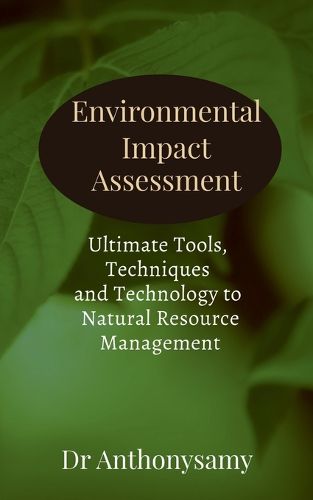Readings Newsletter
Become a Readings Member to make your shopping experience even easier.
Sign in or sign up for free!
You’re not far away from qualifying for FREE standard shipping within Australia
You’ve qualified for FREE standard shipping within Australia
The cart is loading…






This title is printed to order. This book may have been self-published. If so, we cannot guarantee the quality of the content. In the main most books will have gone through the editing process however some may not. We therefore suggest that you be aware of this before ordering this book. If in doubt check either the author or publisher’s details as we are unable to accept any returns unless they are faulty. Please contact us if you have any questions.
Mastering Environmental Impact Assessment is an essential guide for professionals, students, and policymakers involved in environmental management and project planning. This book excels in explaining how to effectively use modern tools, techniques, and technologies in Environmental Impact Assessment (EIA), making it a standout resource in the field.The book provides an in-depth exploration of advanced methodologies, such as Geographic Information Systems (GIS), remote sensing, and modeling software, which are crucial for conducting accurate EIAs. Each tool is thoroughly explained, with practical guidance on its application, benefits, and potential limitations, making the book accessible to both newcomers and experienced professionals.A major strength of the book is its structured approach to the EIA process, covering key elements like screening, scoping, impact analysis, and monitoring. The inclusion of checklists, guidelines, and frameworks further enhances its practicality, ensuring that all necessary components are considered. The emphasis on stakeholder engagement and public participation adds a vital dimension to the process, highlighting the importance of social acceptability in environmental management.What truly sets this book apart are its insightful case studies from around the world, illustrating successful EIA implementations across various contexts.
$9.00 standard shipping within Australia
FREE standard shipping within Australia for orders over $100.00
Express & International shipping calculated at checkout
Stock availability can be subject to change without notice. We recommend calling the shop or contacting our online team to check availability of low stock items. Please see our Shopping Online page for more details.
This title is printed to order. This book may have been self-published. If so, we cannot guarantee the quality of the content. In the main most books will have gone through the editing process however some may not. We therefore suggest that you be aware of this before ordering this book. If in doubt check either the author or publisher’s details as we are unable to accept any returns unless they are faulty. Please contact us if you have any questions.
Mastering Environmental Impact Assessment is an essential guide for professionals, students, and policymakers involved in environmental management and project planning. This book excels in explaining how to effectively use modern tools, techniques, and technologies in Environmental Impact Assessment (EIA), making it a standout resource in the field.The book provides an in-depth exploration of advanced methodologies, such as Geographic Information Systems (GIS), remote sensing, and modeling software, which are crucial for conducting accurate EIAs. Each tool is thoroughly explained, with practical guidance on its application, benefits, and potential limitations, making the book accessible to both newcomers and experienced professionals.A major strength of the book is its structured approach to the EIA process, covering key elements like screening, scoping, impact analysis, and monitoring. The inclusion of checklists, guidelines, and frameworks further enhances its practicality, ensuring that all necessary components are considered. The emphasis on stakeholder engagement and public participation adds a vital dimension to the process, highlighting the importance of social acceptability in environmental management.What truly sets this book apart are its insightful case studies from around the world, illustrating successful EIA implementations across various contexts.